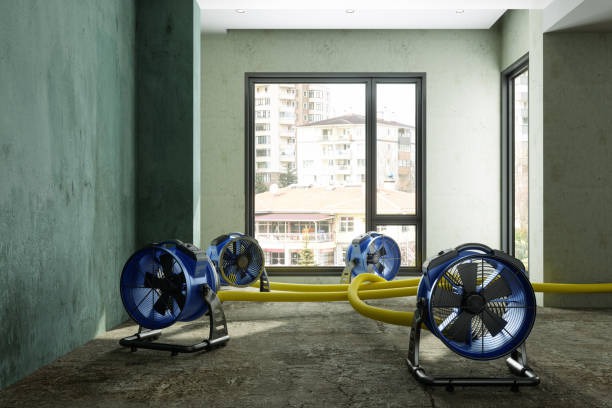Water damage can strike when you least expect it, turning a peaceful home into a stressful, damp mess. Whether it’s from a burst pipe, a leaking roof, or natural flooding, water damage can wreak havoc on your property. Knowing how to streamline the restoration process can save you time, stress, and money.
1. The Immediate Actions to Take
When you first notice water damage, acting quickly is crucial. Here’s what to do:
-
Safety First: Ensure that it’s safe to stay in the house. If there are any risks of electrical hazards, evacuate the area immediately.
-
Stop the Water Source: If water is coming from a burst pipe, turn off the main water line to prevent further damage.
-
Document the Damage: Take photos and videos of the affected areas for your insurance claim.
Contacting the Professionals
While some might attempt a DIY approach, professionals have the expertise and equipment to handle water damage efficiently. When you reach out for help, make sure to ask about their process, their timeline, and their experience with similar situations.
Franchises that operate in water damage restoration, such as a PuroClean franchise, offer expertise and tools to manage and mitigate damage effectively.
2. Assessing the Extent of the Damage
Understanding the extent of the damage is necessary to formulate an effective recovery plan. Professionals typically use specialized tools, such as moisture detectors, to assess the moisture levels in your home.
Categories of Water Damage
Water damage is classified into different categories, which help in determining how severe the issue is:
-
Clean Water: Clean water comes from a clean source, such as a broken water supply line.
-
Gray Water: Contains contaminants and may come from washing machines or dishwashers.
-
Black Water: Highly contaminated and poses health risks, often coming from sewage or flooding.
3. Drying Out and Dehumidifying
Removing water isn’t enough; drying out the space and dehumidifying is crucial to ward off mold growth and further structural damage.
Effective Drying Techniques
Professionals use various techniques to dry out the space, including:
-
Air Movers: High-speed fans that promote airflow and speed up the drying process.
-
Dehumidifiers: These reduce humidity levels to prevent mold and mildew.
-
Desiccants: Chemical drying substances for particular circumstances.
Techniques for water damage restoration in Aurora, proficient in drying and dehumidifying, can bring your home back to life with minimal downtime.
4. Preventing Mold
Mold can start growing within 24 to 48 hours, so it is essential to dry water-damaged areas promptly. Regular inspections and proper ventilation can also deter mold growth.
When dealing with water damage, addressing related issues like mold removal in Stouffville is equally essential, ensuring your home remains safe and healthy.
5. Restoring the Damaged Areas
Restoration involves returning your property to its pre-damage condition. This process may include repairs to drywall, flooring, and ceilings.
DIY or Professional Help
Some minor repairs can be done by hand, but for significant damage, it’s wise to hire professionals. They will ensure that your home is restored to its original state and follows all safety standards.
6. Handling Your Insurance Claim
Dealing with insurance can be complex, but understanding the process can simplify it.
Documenting Everything
Keeping thorough records, from photos to receipts, is essential when filing a claim. This documentation supports your case and helps expedite the process.
Working With Your Insurance Company
Clear communication with your insurance company is crucial. Keep a detailed log of all interactions and understand your policy’s terms regarding water damage.
7. Understanding the Costs
The costs of water damage restoration can vary widely, influenced by factors like the extent of the damage and the materials affected.
Analyzing Cost Factors
Several factors influence the cost of restoration, including:
-
The Type of Water: Clean water is cheaper to clean than black water.
-
The Area Affected: Larger areas with extensive damage require more work and resources.
-
Materials Involved: Hardwood floors, for instance, can be more expensive to replace than linoleum.
8. Preventing Future Water Damage
Prevention is the best strategy. Implementing measures to avert future incidents can protect your property.
Essential Preventative Measures
Consider these steps to reduce the risk of future water damage:
-
Regular Inspections: Check pipes, roofing, and appliances regularly.
-
Seal Openings: Ensure windows and doors are sealed properly.
-
Grade Your Landscape: Ensure that water flows away from your home.
Investing in Quality Repair
Invest in quality materials and repairs to enhance resilience against future incidents. This investment can save time and money down the road.
9. Maintaining Communication with All Parties Involved
Effective communication is key in ensuring a smooth recovery process.
Clear Coordination
-
Keep open lines of communication with contractors, insurance representatives, and family members.
-
Regular updates help avoid misunderstandings and ensure that everyone is on the same page.
Consistent Follow-Up
-
Regular check-ins on progress can help catch issues early and keep the process on track.
-
Be proactive in addressing concerns or delays promptly.
Whether you’re managing the restoration on your own or with professionals, maintaining clear communication helps you navigate the recovery efficiently.
Final Thoughts
Recovering from water damage can be overwhelming, but understanding the steps and processes involved can streamline the restoration journey. Prioritize safety, act quickly, and work with professionals to restore your home efficiently. Taking preventive measures will help you guard against potential future water damage, ensuring peace of mind for you and your loved ones.
